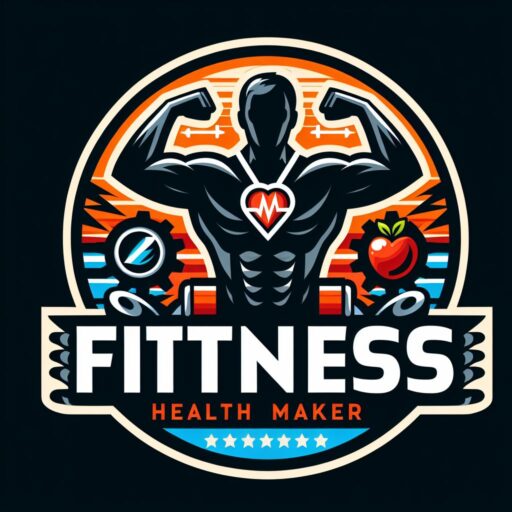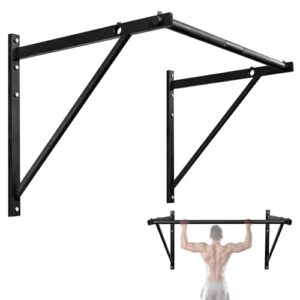Beginner strength training for women builds muscle, enhances strength, and improves health. It’s vital to start with basic exercises and progress gradually.
Embarking on a strength training journey can empower women to feel stronger and more capable in their everyday lives. Crafting a well-structured routine that emphasizes proper form and balanced muscle development is essential. The focus should be on learning correct technique and progressively increasing weight to avoid injury while maximizing results.
Understanding the fundamentals of strength training – such as the importance of consistency, rest, and nutrition – lays the groundwork for a successful fitness journey. With commitment and the right guidance, even those new to lifting weights can achieve remarkable progress. Tailoring the training to individual goals and capabilities ensures that you not only enhance your physical fitness but also boost your confidence and mental well-being.
Empowering Women Through Strength Training
Strength training isn’t just for men. For women around the world, lifting weights has become a powerful mode of transforming the body and mind. Empowering Women Through Strength Training is about building a stronger, more confident you, both inside and out.
Breaking Stereotypes: Benefits Of Lifting For Women
Once a male-dominated space, the weight room has opened its doors to women who are redefining strength. Serotonin and endorphins flood your system, improving mood and energy levels. Consider these key benefits of lifting for women:
- Increased metabolic rate: Muscle burns more calories, even at rest.
- Enhanced bone density: Say goodbye to the risk of osteoporosis.
- Curves and toning: Build a stronger, shapelier figure.
- Better joint health: Strong muscles support and protect joints.
Mental Meets Physical: Gains Beyond Muscle
Strength training pushes you to overcome mental barriers. It’s about the sense of accomplishment that comes with each extra rep. With every lifted weight, the mind grows more resilient and focused. The body’s transformations are just the beginning:
| Physical Health | Mental Health |
|---|---|
| Better posture | Increased confidence |
| Improved endurance | Stress reduction |
:max_bytes(150000):strip_icc()/2023-Q1-Power-Up-Punches-Recirc-ba58fde19361479aaf11a52e38c79e20.jpg)
Credit: www.shape.com
Laying The Groundwork: Setting Achievable Goals
Embarking on a strength training journey begins with clear, attainable objectives. Setting goals not only fuels your motivation but also provides a roadmap to success. Let’s prepare the foundation for a powerful strength training experience.
Assessing Your Starting Point
Understanding your current fitness level sets the stage for realistic goal-setting. Begin by noting your strength in different exercises. Record how much weight you can lift and how many repetitions you can perform. Consider these factors:
- Current fitness level: Acknowledge your baseline without judgment.
- Experience with strength training: Are you a newcomer or have previous experience?
- Fitness assessment: Track simple strength tests like squats, push-ups, and planks.
- Health status: Account for any conditions or injuries that could impact your training.
Smart Goal-setting For Fitness
SMART goals pave the way for measurable and achievable results. They stand for:
| S | M | A | R | T |
|---|---|---|---|---|
| Specific | Measurable | Achievable | Relevant | Time-Bound |
| Define precise targets. | Ensure progress can be tracked. | Set goals within reach. | Align objectives with your life. | Establish a deadline. |
Create SMART goals to guide your strength training path:
- Determine a specific number of workouts per week.
- Set a measurable increase in weights or reps every two weeks.
- Adjust exercise difficulty to keep goals achievable.
- Tailor your regimen to your lifestyle for relevance.
- Give yourself a realistic timeline to hit milestones.
By starting with SMART objectives, women can effectively navigate their beginner strength training voyage. Embrace your starting point and set intelligent, personalized goals for a gratifying fitness journey.
Workout Principles For Strength Building
Embarking on a strength training journey brings transformation not just in physique, but also in confidence. Women new to lifting weights will uncover a powerful world of strength building. It balances the right exercises with unique body needs. The path to empowerment and muscle gains lies in understanding core principles. We dive into two key rules: Progressive Overload and Rest and Recovery.
Understanding Progressive Overload
Progressive overload is the cornerstone of strength gains. It means gradually increasing the stress on your muscles. Muscle growth occurs when they repair stronger post-workout. This method is essential for continuous improvement.
- Increase your weights: As you get stronger, lift heavier to challenge muscles.
- Vary your reps: Mix low-rep, heavy sets with high-rep, lighter ones.
- Alter rest periods: Adjust rest times between sets for varied intensity.
Track your lifts in a journal. This way, you’ll see your progress in numbers!
The Role Of Rest And Recovery
Rest and recovery are critical for strength building. They allow your muscles to heal and grow. Overlooking rest leads to overtraining and stalls your progress. Aim for balance to maximize gains.
| Component | Description |
|---|---|
| Sleep | 7-9 hours per night promotes muscle recovery. |
| Active recovery | Light activity on rest days helps circulation and healing. |
| Nutrition | Proteins rebuild, while carbs and fats fuel your training. |
Remember, rest days are growth days. Embrace them as part of your strength journey.

Credit: m.facebook.com
Crafting Your Strength Training Routine
Embarking on a strength training journey unlocks numerous health benefits for women. It’s essential to create a routine that enhances muscle tone, boosts metabolism, and promotes overall strength. Let’s dive into how to build that perfect workout regimen tailored for beginners.
Full-body Workouts Vs. Split Routines
When starting, it’s crucial to recognize the difference between full-body workouts and split routines. Both have advantages, tailored to different goals and schedules.
- Full-body workouts target all major muscle groups in a single session. This approach is ideal for those with limited time, aiming for two to three workouts per week.
- Split routines, in contrast, focus on specific body parts each session. It allows for more frequent training, with each muscle group resting while another works.
Exercises Every Beginner Should Master
Beginning your strength training journey means mastering some key exercises first. These are foundations of a strong and resilient body.
| Exercise | Benefits | Category |
|---|---|---|
| Squats | Build lower body and core strength | Legs & Glutes |
| Push-ups | Enhance upper body and core stability | Chest & Arms |
| Deadlifts | Improve posture and back strength | Back & Hamstrings |
| Planks | Strengthen core endurance | Core |
Consistently practicing these exercises ensures a robust foundation. As skill increases, incorporate variations to continue challenging your body.
Navigating The Gym: Equipment And Etiquette
Walking into a gym can be overwhelming. Bright lights shine on rows of machines and weights. It’s easy to feel lost. This section is a beginner’s guide to gym equipment and manners. Learn what each piece does for your body. Discover simple rules to keep workouts smooth and respectful. Let’s unravel the gym mystery together!
Familiarizing Yourself With Weights And Machines
Start with the basics. Dumbbells and barbells are great for strength training. Adjustable machines target specific muscles and are user-friendly. Check the pictures on them for guidance. Staff are there to help, feel free to ask for assistance.
- Free Weights: Include dumbbells, barbells, and kettlebells.
- Resistance Machines: Focus on one muscle group at a time.
- Cardio Machines: Like treadmills and stationary bikes, boost your heart rate.
- Cable Machines: Offer a range of motion and exercise variety.
Gym Etiquette 101
Respect is key. Wipe down machines after use with provided sprays or towels. Share equipment during busy times. Don’t rest on machines. Keep personal belongings in lockers or designated areas.
| Do’s | Don’ts |
|---|---|
| Return weights after use | Drop weights loudly |
| Keep a safe distance | Invade someone’s space |
| Limit phone usage | Make calls on the gym floor |
| Use headphones | Play loud music openly |
Wait your turn patiently. If someone’s using equipment you need, ask to work in or wait. Avoid offering unsolicited advice. Focus on your routine and let others do the same.

Credit: home.bodybyufit.me
Nutrition And Lifestyle: Fueling Your Strength Journey
Welcome to the empowering world of strength training, ladies! Building muscle isn’t just about lifting weights; it’s also about fueling your body correctly. Think of your body as a high-performance engine – it needs the right fuel to run efficiently. Consider nutrition and lifestyle the twin turbochargers in your strength training vehicle, propelling you towards your goals with energy and stamina. We will delve into the essentials that every beginner should embrace to ensure their body is as strong on the inside as it is becoming on the outside.
Key Nutrients For Muscle Growth
First on your strength training journey is understanding the right nutrients that will support muscle growth.
- Proteins: Vital for muscle repair and growth.
- Carbohydrates: Provide essential energy during workouts.
- Fats: Crucial for hormone production and joint health.
Create delicious meals packed with these nutrients. Incorporate chicken, fish, lentils, quinoa, sweet potatoes, and avocados into your diet. Your muscles will thank you!
The Importance Of Sleep And Hydration
Never underestimate sleep and hydration. Both play a monumental role in strength training.
- Sleep: Essential for muscle recovery and growth.
- Hydration: Water aids in transporting nutrients and preventing injuries.
Aim for eight hours of sleep and drink plenty of water throughout the day. A hydrated, well-rested body performs better and recovers faster. Start your journey today and remember, a strong body is built on a foundation of good nutrition, sleep, and hydration.
Frequently Asked Questions Of Beginner Strength Training For Women
How Should A Beginner Start Strength Training?
Beginners should start strength training by consulting a professional for personalized guidance, focusing on proper form, starting with bodyweight exercises, gradually incorporating weights, and ensuring adequate rest and recovery between workouts.
How Many Days A Week Should A Woman Strength Train?
A woman should aim for strength training 2-4 times per week, allowing for muscle recovery between sessions.
Is 20 Minutes Of Strength Training A Day Enough?
Twenty minutes of strength training each day can be sufficient for beginners or to maintain fitness, but goals and current levels may necessitate longer or more intense sessions.
What Are The Beginner Exercises For Women’s Weights?
Begin with dumbbell squats, overhead presses, bicep curls, tricep kickbacks, and lunges. Progress to deadlifts, bent-over rows, and chest presses for a full-body routine.
What Are Beginner Strength Workouts For Women?
Beginner strength workouts for women typically involve exercises focusing on major muscle groups, using body weight or light weights, and include movements like squats, lunges, push-ups, and planks.
How Often Should Women Train For Strength?
Women new to strength training should aim for 2-3 sessions per week, allowing muscles to rest and recover between workouts for optimal growth and strength gains.
Conclusion
Embarking on a strength training journey paves the way to empowerment. Remember to celebrate each victory, big or small. Consistency is your greatest ally in building a stronger, healthier you. Get ready to embrace the transformative power of lifting, one rep at a time.
Let’s lift and rise, ladies!
















